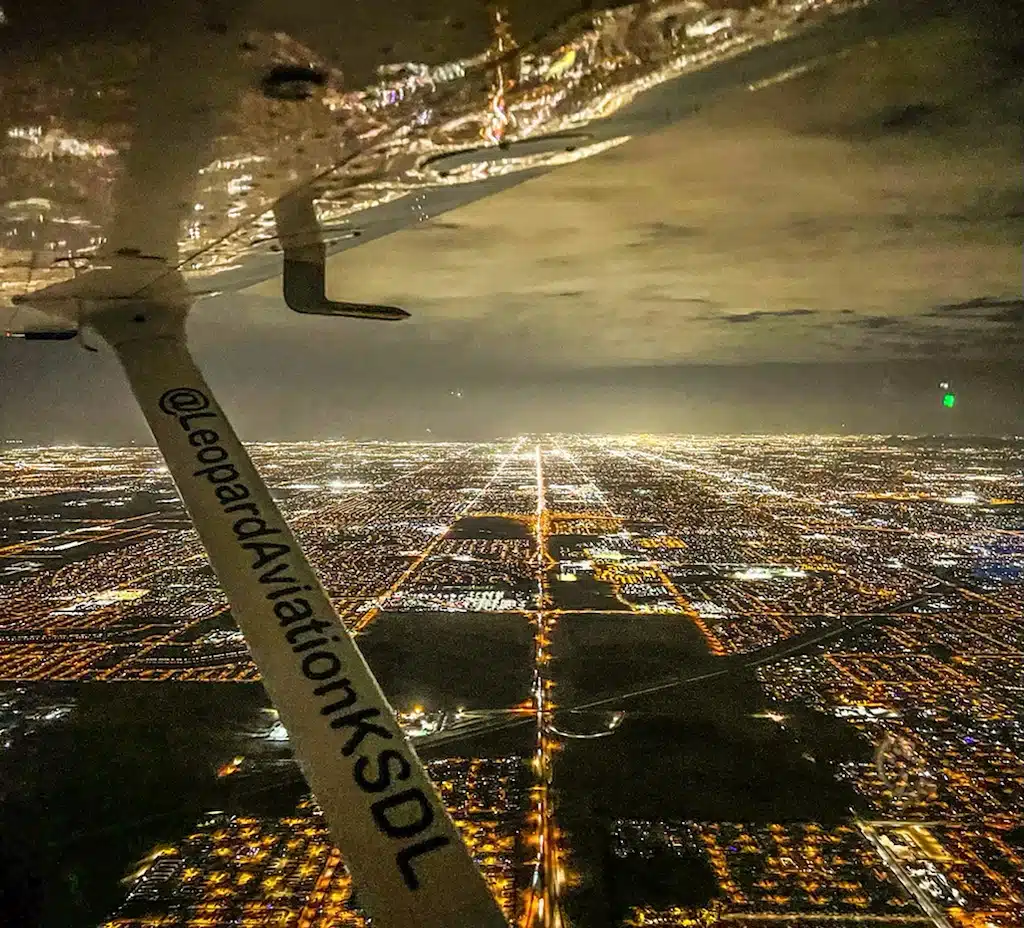What Is Instrument Rating: A Complete Guide
Learn all about instrument flight rules by studying at Leopard Aviation. Call 833-359-5735 to learn more.
What is instrument rating? For anyone seeking a commercial pilot license, this intensive training focused on instrument flight rules is crucial. Receiving an instrument airplane rating is a great way to advance your career as a commercial airline pilot because it allows you to carry out cross-country flight procedures without looking out the window.
Learn more about instrument ratings, how you can earn one, and what the training entails.
Instrument Flight Rules: The End Goal of Instrument Flight Training
Most pilots operate under Visual Flight Rules (VFR). The National Airspace System lets pilots rely on their own visuals while flying in VFR and is typically best for clear, sunny skies. Cloudy or stormy weather conditions may force pilots to change their flight category to IFR.
Instrument Flight Rules (IFR) are what you can fly under after receiving your instrument rating. This means you won’t have to stick to any weather requirements and can work alongside air traffic control to evaluate the airspace. IFR generally shorten flight times and make for a significantly more efficient flight.
Flights are often safer when pilots use IFR because high-tech navigation systems offer more assistance than the eye can see.
You must have plenty of aeronautical knowledge and a good understanding of how air traffic control works to fly under IFR. However, the payoff is well worth the intense training.
How To Earn an Instrument Rating
The basic instrument rating requirements are the ability to read, speak, and write English. You must also show a robust amount of knowledge and flight experience. To get an instrument rating, you must hold a current private pilot certificate or subsequently apply for a private pilot license.
In addition, you’ll need to log ground training, log the necessary flight training, and receive an endorsement from an authorized instructor. The rating requires plenty of aeronautical knowledge as well, so you should expect to meet the necessary hours of instrument flight time as follows:
- Flight time from an authorized instructor: 15 hours
- Instrument time (actual or simulated): 40 hours
- Cross-country flight time as pilot in command: 50 hours
- Cross-country flight distance: 250 Nautical miles
Once you meet these requirements and undergo the necessary three hours of instrument training, you must pass a practical test and a written knowledge test to receive your instrument rating.
What Goes Into Instrument Flight Training
The training process will take roughly seven weeks, though if you are yet to receive your private pilot certificate, you will need a few months of additional training. Instrument rating training involves ground school training and logging simulated instrument time to prepare for the instrument rating checkride.
A flight simulator, or aviation training device, lets you take an instrument approach safely until you build up the ability to fly under IFR.
An authorized instructor will guide you through ground training and operating your flight training device. You’ll be able to gain confidence in the cockpit using computer instruments only instead of your own visuals.
Navigating Instrument Meteorological Conditions
A major part of earning your commercial or private pilot certificate is planning for weather conditions and navigating them accordingly. You may never intend to fly through actual instrument meteorological conditions (IMC). However, instrument training can help you navigate any weather patterns.
Holding a private pilot license is one step, but what if you aren’t equipped to fly under VFR? Completing the instrument rating requirements will expand your horizons and allow you to travel safely when the weather conditions are not ideal.
Commercial pilots, on the other hand, have the responsibility of bringing hundreds of passengers to their destinations. They must be able to navigate all types of weather, not just clear skies that allow for VFR. Obtaining an instrument rating allows commercial pilots to fly under any scenario thanks to their flight training.
Why Earn an Instrument Rating?
Now that you have the answer to “What is an instrument rating,” it’s time to find out why you should get one. Learning to fly with an instrument flight plan gives you crucial skills to become a commercial airliner pilot. Although it’s possible to earn a commercial certificate without one, adding an instrument rating to your portfolio will give you much more room for career growth.
You’ll have more opportunities available to fly with a commercial airline, and you can also become a certified flight instructor. Becoming a proficient instrument pilot extends your skills beyond VFR.
Most importantly, getting an instrument rating helps make all your flights safer. You’ll have your aircraft’s computer systems as a safety net to help you get from Point A to Point B if the visual conditions are not ideal. Undergoing the proper training will prepare you for any emergency scenario, such as flying through clouds instead of dodging them.
Start Your Instrument Training and Flight Lessons with Leopard Aviation
At Leopard Aviation, we have the answer to “What is instrument rating,” and so much more. Learn about instrument training and the process of earning your instrument rating.
Take the first step towards becoming an airline pilot and call 833-359-5735 to speak with a flight instructor today.

